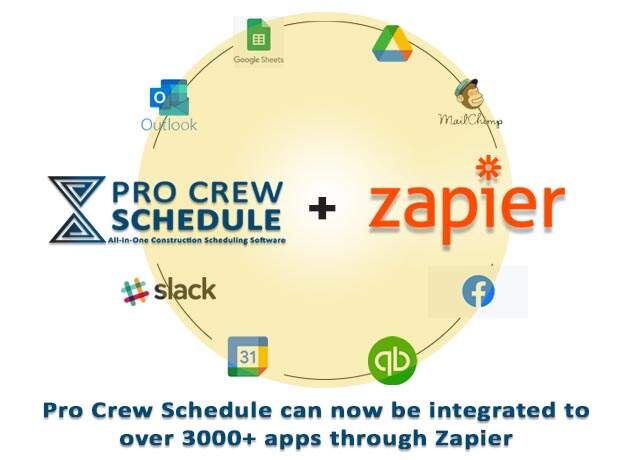Can you remember when everyone in the jobsite, including project managers, contractors, and subs, are entirely disengaged from the office? And any needs and questions meant jumping into the truck, heading immediately back to the office. Apparently, everything has changed now due to modern construction needs.
As the construction sector heading over the years, modern site requirements have already reached the pinnacle of technology. Today, productivity, efficiency, operations are more dependent on digital information and instant communications. This is the reason why the Internet and connectivity for tons of devices have rapidly become essential for every construction site.
Read this blog to discover the importance of Internet connectivity in construction sites and some of the best Internet options to deploy onsite.
Modern Construction Needs
Just as power saws, pickup trucks, excavators did not exist on construction sites 100 years ago, the latest technologies and advancements enable today’s construction companies to do faster, safer, and better than ever. Here are some examples of how modern construction needs primarily depend on the Internet and reliable networking.
1. Improving Productivity
Every construction jobsite and project is unique, with its own set of tasks, risks, and challenges. This is one of the reasons why streamlining processes and productivity becomes a huge challenge today. Good thing that there are mobile software solutions to help manage every aspect of the construction site virtually.
IoT devices, machinery, augmented reality (AR) are drastically changing the status of productivity on construction sites. Moreover, the Internet and open access to cloud computing are also one of the reasons why productivity increases. So what does it looks like? Read the following below:
- Sensors installed on equipment and materials can track how everything moves across the jobsite.
- Augmented Reality (AI) can be used to analyze the recorded sets from the movements.
- Gathered data is utilized to develop solutions that increase accessibility by organizing tools and material placements.
2. Safety
OSHA statistics have confirmed that construction is one of the most hazardous industries to work in. In fact, 1 out of 5 worker deaths in the U.S. are construction-related. Moreover, non-fatal injuries have cost construction companies millions of dollars every year due to reduced productivity and work stoppage.
Also, digitized safety mechanisms are now making a big difference. It allows construction companies to gather data on work processes, decision-making, and collaboration. The data being collected is analyzed to determine a much better safety protocol and worker safety training.
Apps can help project managers track every crew on your team in real-time, manage inventory, materials, and more.
3. Operations
Current construction needs have moved out of the office as well as into onsite operations with mobile applications, improving measurements, real-time inspections, precision placement of objects with GPs, and many more. Moreover, ground-based site rovers and automated drones can also be equipped with HD cameras and LiDar to review and make precise photographic records of the construction site every day.
AAI can assist PMs with comparing this data against models. Drones, on the other hand, can even be programmed to view and count material inventories regularly. Having all of these techs on the construction site and reliable connectivity can help everyone keep up with existing inventory.
Construction Site Internet Options
There are several internal solutions available today for construction sites. However, the right Internet solution usually depends on the duration and requirements of the project. Below are some examples.
1. DSL
DSL, short for Digital Subscriber Line, is a very popular choice by several industries, including construction. The connection is widely available, reliable, and fast.
- Pros: DSL is proven to be reliable and fast. It can also be widely available in many urban areas and will not occupy your phone line.
- Cons: DSL is a much better option, but a physical phone in line is necessary for it to work. Depending on the site’s location, DSL may not be a good choice since perhaps it can take too long.
2. Wireless and the cloud
LTE, commonly known as 4G, is now helping construction businesses achieve the “always-on” network connectivity. In the early phase of your construction project, sites are often void of luxuries like the Internet, power, and telecommunications. That is why site managers should be relentless in the pursuit of reliability and must be prepared.
Pros:
- 4G provides ideal failover solutions.
- 44G is a perfect solution for backing up.
Wireless connectivity can pick if the primary network fails, still delivering seamless connectivity at the highest speeds.
Cons:
- Wireless networks require consistent management.
- Constant physical access to equipment can be impossible when the network is greatly distributed and many temporary locations.
- Wireless connectivity is very useful when using cloud-based management software. Matched with a speed and scale of 4G, everything can be incredibly managed, tracked, and analyzed. On top of that, the reliability, flexibility, and speed of this network can be assured 24/7.
3. Portable/Unplugged
This wireless modem provides Internet connection anywhere in the country for as long as the two networks are available in that region.
- Pros: Portable, it is quick to set up since what you need is only power.
- Cons: 3G can be somewhat slow depending on two factors, usage and multiple users. Both aspects can slow the transfer of data.
4. Tethering
Tethering is typically for those who already have smartphones and are using a data plan from their providers.
- Pros: No additional setup is required.
- Cons: Not ideal for bigger teams and areas with poor reception.
5G is Set to Revolutionize the Construction Industry
5G has already made its way to the construction industry last year, 2020. 5G’s “network slicing” feature allows communication service providers to alter connectivity services to the exact requirements of a given application, device, user, or context.
Construction Applications
This is a big deal in construction since the computing power necessary to run data-intensive files like a 3D BIM model does not have to exist inside the device. Instead, processing data can now be performed in the cloud, with the resulting content being served up quickly, giving you access to do more jobs onsite without skipping,
A side advantage is that devices used in the field will need lesser computing power, making them physically lighter and less expensive to carry. While iPads are universal on construction sites, carry one with you all day and you will quickly realize the main advantage of this particular aspect of 5G.
That is just one use case where 5G advantages come into play. But what is thrilling about the technology is the real-time potential for a deeper connection site in the future, where IoT sensors communicate with wearables on crew’s bodies to geo-fence them away from danger zones and immediately alert others if accidents occur.
Here are more of 5G’s benefits:
- In-Synch
What’s more exciting about 5G is it can work together with 4G. Both are helping to deliver constantly high internet speeds for all users, regardless of the locations. Primarily, these are all complementary techs, seamlessly covering outdoor operations while delivering lighting speeds indoors. Utilized as tandem, both 5G and 4G LTE can dramatically lessen user “lag” and deliver uninterrupted, seamless service.
- Powering AI and IoT
Improved connectivity across construction sites improves device operation speeds. As IoT and AI devices play a critical role in construction, machinery is becoming more and more data reliant compared to before. With 5G, a consistent connection is guaranteed across the board. Hence, it will be easier for everyone onsite to effectively manage all complicated jobs of delivering necessary data to multiple devices simultaneously.
For you to meet and sustain the bandwidth demands of various devices and ensure they are functioning at full capacity, a proper capacity has to be regularly available. So always be ready and prepared with other things that are correlated with Internet connectivity.
- Keeping it all safe
Beyond this, great connectivity can improve onsite safety. The combination of 4G and 5G will allow greater control, specifically over machinery-related risks and potential transport.
As new techs come into play, super-fast connectivity speeds become imperative. New innovations like AI-equipped transport and CCTV cameras can virtually recognize improper PPE use, which intermittent or weak signals will primarily impair.
It’s a good thing that 4G LTE and 5G are supplemented by a robust infrastructure and have the potential to meet the necessary increased capacity as AI-backed techs multiplied onsite.
Use the Most of Construction Scheduling Software
Whether you need a project management tool or cloud-based systems that can help you better manage your resources and people, only by adopting cloud technologies can you utilize them. And with cloud-based systems relying on steady Internet connectivity, you become confident to be fully connected while onsite.
Similarly, tethering smartphones to any device will never be enough to sustain your construction team. But rendering project management tools can be helpful. That is why you need a cutting-edge software solution that is not hampered by network coverage, data restrictions, and incapability to transfer data internally.
This is where you need Pro Crew Schedule the most. This software solution is flexible enough to connect upon any project time constraints. And it works best with reliable and faster Internet connectivity. On top of that, it offers tons of advantages, including cost management, real-time updates, time-tracking, accessibility, etc.
Get started with a 30-day FREE trial to experience its powerful features
Key Takeaways
The construction industry should adopt digital advances and embrace smarter processes and technologies to stay competitive. By working with a list of trusted and experienced Internet providers can make construction firms ensure that a reliable, high-quality Internet network connection is established.







